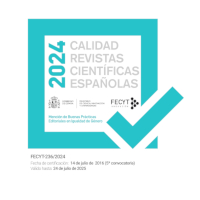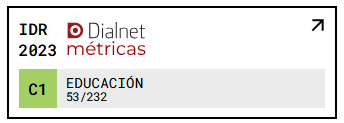Popular traditional music in the schoolcurriculum: does it help to develop a “national being” or the educate fordemocracy?
DOI:
https://doi.org/10.18172/con.647Keywords:
Popular traditional music, school curriculum, identity, nationalismAbstract
This paper refers to minorities’ musical expressions and their treatment and articulation in the school curriculum, this being considered as part of social discourse and therefore embedded in power relations. We deal with two main aspects: the first one refers to the way in which traditional popular music is included at school; specifically, the way minority groups’ musical expressions are treated in everyday school practices and the meaning that is built about these artistic practices considered as ‘alterity’. The second aspect refers to the diverse arguments that justify the presence of popular traditional music in the curriculum from two different perspectives: the ‘nationalist’ discourse in contrast with the one of ‘education for democracy’. The Critical Pedagogy perspective revels the positivist treatment of folk music as an ‘artifact’ in schools. The analysis of institutions and educational practices in the Argentinean context show an attitude about Art oriented towards the construction of a national being blended with Eurocentric features, in wich education for democracy is still in process.Downloads
References
Bourdieu, P. (2000). La distinción. Criterios y bases sociales del buen gusto. Madrid: Taurus.
Casalla, M. (1998). Tecnología y pobreza, capítulo la fábula del banquete tecnológico universal. Buenos Aires: Fraterna.
Costa Vázquez-Mariño, L. (1997). Práctica pedagógica y música tradicional. Trans Iberia 1, Revista Transcultural de Música. Recuperado de: http://www.sibetrans.com/trans/transiberia/costa.htm.
Delgado, L. (1988). Los componentes estéticos de la práctica social. Notas para el estudio del arte prehispánico. Boletín de Antropología Americana, 18, 33-48.
Duschatzky, S. (1996). De la diversidad en la escuela a la escuela de la diversidad. Revista Propuesta Educativa, año 7, n° 15: 45-49.
Flores Ballesteros, E. (1997). Arte, identidad y globalización. En M. Rubens y Lacarrieu (Comp.), Globalización e identidad cultural (pp 131-145). Buenos Aires: CICCUS.
Freud, S. (1968). Obras Completas. Madrid: Biblioteca Nueva.
García Canclini, N. (2008). Culturas Híbridas. Estrategias para entrar y salir de la modernidad (4° ed.). Buenos Aires: Paidós. [1999].
García Márquez, G. (1982). El coronel no tiene quién le escriba. Cien años de soledad. Caracas, Venezuela: Ayacucho.
Giolláin, D. O. (2002) Popular culture. Cultural relativism and diversity. Revista de Investigaciones Folklóricas, 17, 23-33.
Giroux, H. (1993). La escuela y la lucha por la ciudadanía: Pedagogía crítica de la época moderna. México: Siglo XXI.
Kusch, R. (1976). Geocultura del hombre americano. Buenos Aires: Fernando García Cambeiro.
Lotman, Y. (1999). Cultura y explosión. Lo previsible y lo imprevisible en los procesos de cambio social. Barcelona: Gedisa.
Ong, W. (1993). Oralidad y escritura. Tecnologías de la palabra. Buenos Aires: Fondo de Cultura Económica.
Sodré, M. (1998). Reinventando la cultura. La comunicación y sus productos. Traducción: G. Cetrinas. Barcelona: Gedisa.
Stenhouse, L. (1987). La investigación como base de la enseñanza. Madrid: Morata.
Terigi, F. (1999). Reflexiones sobre el lugar de las artes en el currículo escolar. En J. Akoschky et al., Artes y Escuela. Buenos Aires: Paidós.
Downloads
Published
How to Cite
Issue
Section
License
The authors retain copyright of articles and authorize Contextos Educativos. Revista de Educación the first publication. They are free to share and redistribute the article without obtaining permission from the publisher as long as they give appropriate credit to the editor and the journal.
Self-archiving is allowed too. In fact, it is recommendable to deposit a PDF version of the paper in academic and/or institutional repositories.












